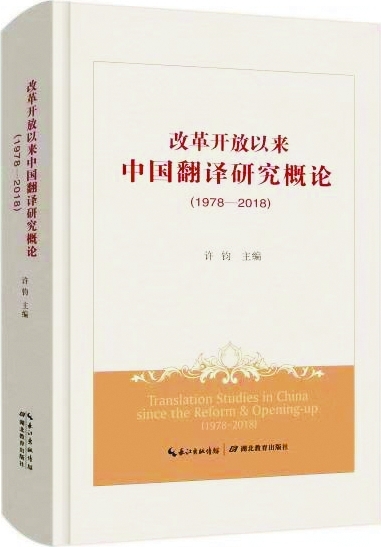From translating the world to translating China

Translation Studies in China since the Reform and Opening up
This year is the 40th anniversary of China’s reform and opening up. It would be fair to say that without the reform and opening up and the efforts of scholars in the translation circle, the development of translation courses in China would not achieve what they do today.
The relationship between translation and reform and opening up, especially the role and the development of translation in China’s reform and opening up, is worth studying. Translation Studies in China since the Reform and Opening up by Xu Jun, a professor from the School of International Studies at Zhejiang University, is of great theoretical and practical value.
In the last four decades, the translation practices and studies in China have had two high tides. The first one followed the nation’s reform and opening up. A large number of scientific and technological materials as well as advanced cultural and managerial writings were translated.
The second high tide appeared in the early years of the 21st century, and we are still experiencing its development and change. As the national strength and international influence of China expands, the economic and cultural influence of China spreads abroad. In particular, China’s ideas and proposals for establishing a community of shared future for mankind have been translated at a large scale.
New trends of development have unveiled themselves in recent years. The first one is the shift from translating the world to emphasizing translating China to the rest of the world. China’s economic activities have extended widely across the world and the spread of China’s influence has depended mostly on translation.
The second change is from translating a single subject to multiple subjects. For a long time, literary works have been the major focus of translation as the inclusiveness and charm of literature are eternal themes in translation. As the nation’s reform and opening up pushes forward, the translation of the theories and practices of socialism with Chinese characteristics, large construction projects abroad, Chinese technology and standards, current affairs and movie and TV programs account for an increasingly larger percentage of the total.
The third change is the shift from the translation of several influential Western languages to that of multiple languages. And the last one is the shift from human translation to the combination of human translation and AI translation.
This book for the first time makes a reliable review of the translation industry and the situation of translation studies in China over the last four decades since China’s reform and opening up. Xu outlines the development trajectory of China’s translation studies and reveals the development and change in China’s translation business. It is a summary of the exploration and innovation of China’s translation in the last four decades. Meanwhile, it is also guidance for future development.
(edited by CHEN ALONG)
